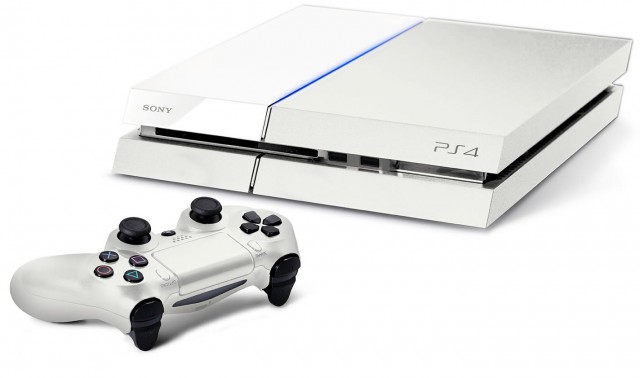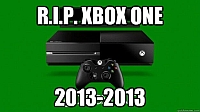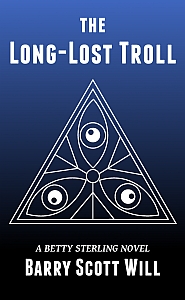- Details
There’s a humorous scene near the beginning of Mel Brook’s History of the World, Part I. Presented as the birth of the art critic, it depicts a caveman relieving himself on a cave painting. While clearly intended as a joke, it speaks to the conflicting nature of artistic critique and how that conflict is escalating in the Internet Age. The problem with critiques of anything, but especially art, is a disconnect between what a critic is able to offer and what audiences want.
A critical assessment of something necessarily includes the critic’s subjective impressions of that thing. Even for a consumer good, for example a car, includes the critic’s opinion on feel of the car, handling, ride comfort, placement of dashboard controls, etc. With art, subjectivity is really all the critic can report—there’s no objective way to experience artistic work.
Meanwhile, the audience for critiques increasingly demands objectivity, despite the fact a purely objective critique will be boring, and, in the case of art, impossible. This clamor is further complicated by the fact art has essentially become a consumer good. All consumers want to know is: is the product (even if the product is art) worth my money? But, no individual critic on Earth can answer that question “correctly” for everyone.
Since critics cannot “get it right” for everyone, everyone becomes a critic of the critics. This has been the case ever since “Letters to the Editor” first became a thing a few hundred years ago. Modern media accelerated the dissemination of “reader opinions.” I remember reading critical letters in nearly every issue of the comics I subscribed to as a teen[1].
Along comes the Internet, and not only is it that much easier to vent your spleen to the “rotten critics,” but everyone now has a platform to broadcast their opinions. Furthermore, the Internet is revealing a nasty undercurrent of psychopathic personalities who viciously attack other people rather than merely debating opinions. The result is a barrage of “opinion pieces” from every corner of the globe masquerading, in some cases, as critical reviews.
Real critiques are an in-depth examination of the subject. Artistic critiques, especially, should be about the reviewer’s experience. What does it mean? How does it make one feel? What questions does it raise? Why are these questions important? Even reviews of consumer product need that human element rather than a rote listing of “features” and “bugs” and “does it work.”[2]
True critiques are diminishing as the rise of loud, often vulgar, and frequently hostile, “review” sites take over the Web and engage in abusive battles of words with their readers. And those types of “click-bait” writers are only increasing. In Pixar’s “The Incredibles,” villain Syndrome says, “When everyone’s super, no one will be.”
When everyone’s a critic…
[1] ROM: Spaceknight, Micronauts, and Star Wars in case you were wondering.
[2] For that kind of review, rating aggregators and e-tail “review” systems are a wonderful replacement, allowing, at a glance, what other consumers judge to be a product’s worth.
- Details
I’ve been playing video games for almost 35 years. I’ve been reading gaming media (magazines and then Internet sites) for about 25 years. The game press has always been an essential part of marketing games. Developers and publishers use the gaming press to hype games and spur sales. What’s so important about the gaming hype machine? Why is it so important to get those Day One sales?
The answer is simple: the game industry is broken.
The Problem
In March 2013, Square Enix published a reboot of the popular Tomb Raider series. The new game, titled simply Tomb Raider, sold 3.4 million copies during its first month of release. Soon after, Square Enix announced it was “very disappointed” in those figures, revealing it had estimated TR would sell between five and six million during the first four weeks.
A few years ago, over three million copies sold would have been a success. (Popular 2003 game Knights of the Old Republic sold only 2.2 million.) Now it’s “very disappointing.” There is a fundamental disconnect between the cost to make AAA games and the price consumers pay. While the latter has been steadily rising (easily hitting nine figures for development plus marketing by some estimates), the cost of games has been declining once adjusted for inflation.
This wouldn’t be a problem if the market for games was expanding fast enough for volume of sales to keep up with cost of production, but it hasn’t. While the occasional huge hit comes along to keep companies afloat, the industry as a whole is sick—not dying—just weak and stuck in endless cycles of trying to get more money from gamers.
Day one DLC. Online passes. Pre-order bonuses. Collector’s editions. Micro-transactions. And, of course, endless hyping through the gaming press. Developers try to cut costs, overworking their employees and cranking out endless sequels that can re-use assets. There’s some good things happening in the indie space (and some not-so-good), but, much as I like indie games, I don’t want to lose AAA gaming, and that is what is slowly happening.
The gamers are out there. The Xbox 360 and PlayStation 3 have sold a combined 166 million consoles. If even half their sales are to individuals who own both, that’s still 120 million console gamers. Plus however many play on PC (Steam had 75 million users as of this past January). So why is it so hard to sell to just a fraction of that user base? Why are gamers not buying games?
Two reasons: games cost too much, and there are too many of them.
- Details
In the wake of Ubisoft not including playable female characters in either Assassin's Creed: Unity or Far Cry 4, the standard tropes are trotted out...the average age of a gamer is 31. Forty-eight percent of gamers are women. Etc.
These numbers are accurate, but are presented with no context. They come from industry information published by The Entertainment Software Association (1). They include ALL gamers. A 60-year old playing Candy Crush Saga counts as a gamer. The legions of middle-aged women playing Bejeweled Blitz count as gamers. When a parent buys a game for a child, the age/gender of the parent is counted, not the age/gender of the child.
Well, today I spent two hours standing in line with my two sons to play the demo of Super Smash Bros. Wii U. Without doing an actual hard count, the total people I saw standing in line were about 95% men between the ages of 15 and 25 (2). "Core" or "hardcore" gaming--the gaming dominated by the AAA games that cost $50 million to make and another $50 million to market--is overwhelmingly young and male. Citing statistics that count all the people playing free mobile games and the like is not going to change that.
And developers know it. They know the people most likely to slam down $60 for a AAA game on day of release are teen or young-20s men and the games are aimed squarely at them. If you're a woman or an older man and you want to see the industry change, there's a simple way to do it.
Spend money. Until you're spending money on hardcore gaming, hardcore games are going to keep dissing you.
(1) Link to current info. Another "fact" that's funny is "88% of games are not rated M." Watch an E3 press conference and it looks like 88% of games are rated M. (There were some trailers that were too disgusting for me. I can't imagine what the games will be like.) Just another example of how the ESA's statistics have no relevance to hardcore gaming.
(2) The actual percentage was probably higher than that; I'm being conservative. Within my immediate space in line there was one old gamer (me), one young gamer (my younger son), and one female gamer (someone in front of me whom I did not know). Everyone else was a teen or young adult male.
- Details
 It is summer and the weather is sunny and warm, great for wearing flip-flops. So it is appropriate Sony and Microsoft flip-flopped their positions from last year’s E3. In 2013, I (and many others) ridiculed Microsoft for talking about TV shows, and entertainment, and sports, and everything except games. I (and many others) praised Sony for focusing on games.
It is summer and the weather is sunny and warm, great for wearing flip-flops. So it is appropriate Sony and Microsoft flip-flopped their positions from last year’s E3. In 2013, I (and many others) ridiculed Microsoft for talking about TV shows, and entertainment, and sports, and everything except games. I (and many others) praised Sony for focusing on games.
Oh what changes hath a year wrought! Microsoft delivered 90 minutes of games and nothing but games. There were no hardware announcements—almost no hardware was mentioned at all except for brief nods to Kinect and SmartGlass (1). Sony countered with two hours that was mostly about games, but, right in the middle, went off the reservation. New SCEA president Shawn Layden got thrown into the fire with an over-long spew of facts and figures that hearkened back to Sony’s bad old E3 pressers. And then, what’s this? Sony is producing television? Did Microsoft hack Sony’s press conference?
On the plus side for Sony, buried in the monotonous swill of data two exciting new products were mentioned. PlayStation TV and Project Morpheus are both worthy of more in-depth exploration and I hope Sony will give us even more details soon. They should have given us more at E3.
Still, it all comes back to the games. Both companies showed games that will almost certainly push consoles off the shelf. Sunset Overdrive and the Halo Collection for Microsoft. Destiny (2) and Uncharted for Sony. Both companies have deals with third party publishers to get exclusive content in otherwise cross-platform games. There were lots of indie games in both shows. The next couple of years look great for gamers (3). I was a little more excited about Sony’s offerings (UNCHARTED!), but that’s just me. There’s plenty to like from both consoles and nothing that definitively makes one better than the other (4).
How will this play out over the next 6 months (through the holiday season)? Sony established itself as a gaming machine and is now slowly adding other features. Microsoft tried to establish itself as an all-in-one entertainment system and is now trying to push games. Thus far, Sony has had the more successful strategy (almost twice as many consoles sold as Microsoft). Will Sony’s divergence into other markets hurt or will the added value only make their already gen-leading console more attractive?
Well, through 3-1/2 hours of press conferences from both companies, the loudest audience response was for Uncharted 4. I’m betting on Sony.
(1) At the time of this piece (June 10), there is no official SKU for a Kinect 2.0 for the Xbox One. In other words, right now, if you buy the cheaper X1, you can’t add Kinect later unless you go through the secondary market (eBay, Amazon Sellers, etc.). 2014 may well be remembered as the final nail in the coffin of motion control. The fad started by Wii has, blessedly, run its course and even MS is giving up and relegating Kinect to the dust heap of history.
(2) Yes, I know Destiny isn’t exclusive to PlayStation. But it’s available first on PlayStation and the new, Glacier White PS4 bundle will sell. Microsoft didn’t show ANY new hardware or bundles.
(3) Favorite line constantly repeated by Microsoft: “This game runs in full 1080p.” Translation: “Yes, we know our games have not been able to run in 1080p so far, that’s why we dumped Kinect so developers can boost the graphic performance. You’re welcome.”
(4) I’m not ignoring Nintendo. Well, actually, yes I am. Nintendo has become its own niche market. If you want to play Nintendo games, you buy a Nintendo console. If you have had enough Mario, Link, and Kirby to last for a while, you don’t need a Nintendo console. Even if you do play Nintendo games, you’re still going to need a PS4 or X1 to play everything else. I call the PS4 and X1 the “Or” consoles—you need a PS4 OR an X1. The WiiU is an “And” console. You need a WiiU AND PS4 or X1.
- Details
 A gamer tells you graphics don't matter.
A gamer tells you graphics don't matter.
Then tells you to play games on PC because, better graphics.
A gamer bemoans the lack of innovation in the industry.
Then screams bloody murder when a favorite franchise updates the core gameplay.
A gamer complains there are too many sequels and not enough new IP.
While buying Super Mario Halo Killzone 15.
A gamer screams publishers are ripping them off with day one DLC.
Then buys the game used.
A gamer criticizes new consoles for not having backward compatibility.
But trades in all their old games to buy new ones.
A gamer argues games are art.
Then demands the artists patch their game because the players don't like the ending.
A gamer objects to the depictions of women in games.
Then treats women gamers like dirt.
A gamer mourns the closing of a studio.
Then returns their game that was only rented.
A gamer is passionate about games.
And passion makes you do weird things.
- Details
 UPDATE: Microsoft has issued a mea culpa and retracted pretty much everything about the Xbox One's DRM policies. Hooray for the power of group outrage!
UPDATE: Microsoft has issued a mea culpa and retracted pretty much everything about the Xbox One's DRM policies. Hooray for the power of group outrage!
“The first-sale doctrine creates a basic exception to the copyright holder's distribution right … Without the doctrine, a possessor of a copy of a copyrighted work would have to negotiate with the copyright owner every time he wished to dispose of his copy.”[1] Seem familiar? This is exactly what Microsoft is asking people who buy disc-based games for the Xbox One to do: negotiate with the copyright owner every time you wish to dispose of your copy of the game.
It's true digital distribution is presenting a number of legal issues around copyright and the first-sale doctrine. Copyright holders want to “license” media (including games) to us, without actually considering the logic behind that stance. If we are only buying a “license” to use content and not buying the content, then copyright holders should be offering to re-sell us the same content for only the cost of the media. For example, if your child destroys your game disc, you should be able to get a new disc for only the cost of the disc—after all, you already paid for the “license.”[2] Of course, this is not how physical distribution works.[3]
Page 8 of 12



